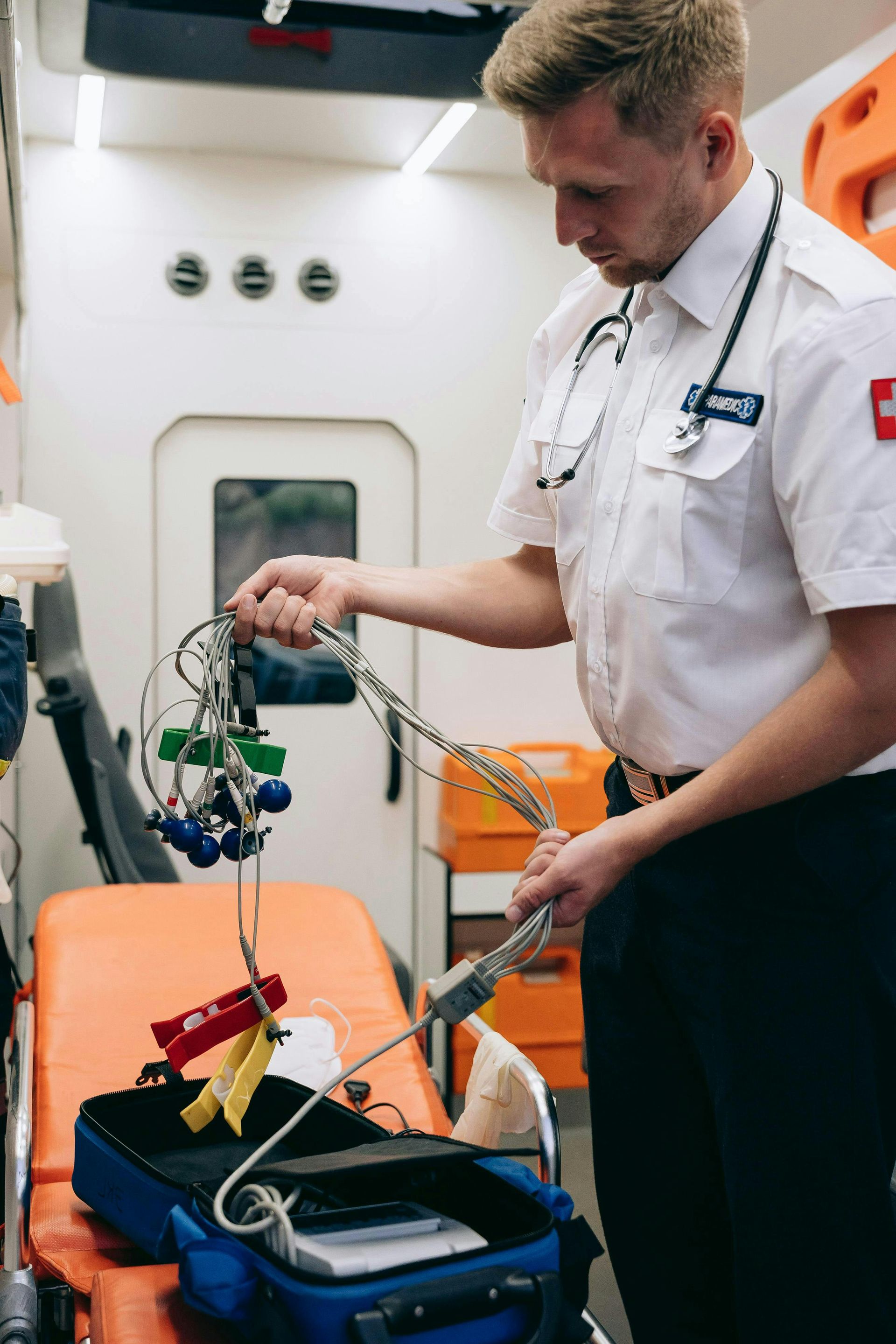950 S. Winter Park Dr., Suite 207
Casselberry, FL 32707
407.452.4918 – Phone
407.505.4245 – Fax
Property@PriortiyJustice.com
Understanding Medical Malpractice: Key Insights From Active Precedent
What is Medical Malpractice?
Medical malpractice happens when a doctor, nurse, or other healthcare professional does something wrong, or fails to do something they should have, which causes harm to a patient. This could include making a mistake during surgery, giving the wrong medication, not diagnosing a serious condition, or providing poor treatment. Not every bad outcome in healthcare is malpractice; it must be proven that the healthcare provider did not follow the accepted standard of care.
Understanding the Standard of Care
The "standard of care" is a legal term that refers to the level of care that a reasonably competent healthcare provider would have given in the same situation. For example, if a patient comes to the hospital with symptoms of a heart attack, the standard of care might include giving the patient an EKG, administering certain medications, and closely monitoring them. If the healthcare provider fails to do this and the patient is harmed as a result, this could be considered malpractice.
The Role of Active Precedent in Medical Malpractice
In legal cases, especially those involving medical malpractice, past decisions by courts (known as precedents) play a big role in how new cases are handled. Judges often look at similar cases from the past to help them decide what to do in current cases. If a previous case was ruled in favor of a patient because a doctor failed to follow the standard of care, that decision could influence future cases with similar facts.
How to Prove Medical Malpractice
To prove malpractice, the patient (or their lawyer) must show that the healthcare provider did something wrong that directly caused the injury. This process usually involves several key steps:
- Establishing the Standard of Care: First, you must show what the standard of care should have been in your case. This might involve looking at medical guidelines, expert opinions, or other similar cases.
- Showing a Breach of the Standard of Care: Next, you need to prove that the healthcare provider did not follow this standard. For example, if a doctor failed to diagnose a serious illness when they should have, this might be a breach of the standard of care.
- Proving Causation: It's not enough to show that the doctor made a mistake; you must also prove that this mistake caused your injury. For example, if a doctor fails to treat an infection, and the infection worsens and causes harm, you would need to show that the lack of treatment was the direct cause of your injury.
- Demonstrating Damages: Finally, you need to show that you suffered actual harm because of the malpractice. This could include physical injuries, emotional suffering, additional medical bills, or lost wages.
The Importance of Expert Witnesses in Medical Malpractice Cases
In most medical malpractice cases, expert witnesses are essential. These are usually doctors or other healthcare professionals who have experience in the same field as the healthcare provider being sued. They help the court understand what the standard of care should have been and whether it was followed.
How Expert Witnesses Help:
- Clarifying Medical Issues: Medical malpractice cases often involve complex medical issues that are hard for non-experts to understand. An expert witness can explain these issues in simple terms so that the judge or jury can make an informed decision.
- Supporting the Patient’s Claims: If a patient claims that a doctor’s mistake caused their injury, an expert witness can review the case and give their professional opinion. If they agree that the doctor made a mistake, their testimony can be very powerful in court.
Types of Medical Malpractice
Medical malpractice can take many forms. Here are some common types:
- Misdiagnosis or Delayed Diagnosis: If a doctor fails to correctly diagnose a condition or takes too long to diagnose it, and the patient suffers as a result, this can be considered malpractice. For example, if a doctor misses the signs of cancer, and the patient’s condition worsens because of the delay, this might be grounds for a lawsuit.
- Surgical Errors: Surgery is a high-risk area for malpractice. Mistakes can include operating on the wrong body part, leaving surgical instruments inside the patient, or performing the wrong procedure.
- Medication Errors: These occur when a patient is given the wrong medication, the wrong dose, or a medication they are allergic to. Such errors can lead to serious harm or even death.
- Birth Injuries: Malpractice during childbirth can result in serious injuries to the baby or mother. This can include failure to monitor the baby’s vital signs, improper use of delivery tools, or not performing a necessary C-section.
- Anesthesia Errors: Anesthesia must be administered carefully. Too much or too little anesthesia, or failure to monitor the patient properly, can lead to serious complications or death.
Case Study: Dr. Francisco Estevez
To better understand how medical malpractice cases are handled, let’s look at a real-life example. In a notable case, a patient named Evila Montero claimed that her doctor, Dr. Francisco Estevez, did not provide the care she needed. The case centered on whether Dr. Estevez conducted a proper investigation into Montero's condition and whether he followed the correct procedures.
Key Points of the Case:
- Failure to Investigate Properly: Dr. Estevez claimed that he had looked into the case by talking to other doctors and an expert, but he did not gather all the necessary evidence, such as medical charts or written expert opinions. The court found that this was not enough and ruled against him.
- Importance of Following Legal Procedures: The court emphasized that doctors must follow strict procedures when investigating a patient’s case, especially if they are being accused of malpractice. Failing to do so can result in losing the case, as happened with Dr. Estevez.
This case shows how important it is for healthcare providers to thoroughly investigate and document their actions. It also highlights the role of the court in ensuring that patients receive fair treatment under the law.
How Active Precedents Influence Future Cases
Active precedents, like the case of Dr. Estevez, shape how future medical malpractice cases are decided. When a court makes a decision, that ruling becomes part of the legal framework that judges refer to when they handle similar cases. This helps create consistency in how the law is applied, but it also means that each new case can add to or change the legal landscape.
For example, if a court decides that a certain type of medical error is definitely malpractice, future cases involving that error might be decided more quickly because the precedent has already been set. However, if new evidence or changes in medical practice emerge, those precedents can be challenged and potentially overturned.
The Challenges of Proving Causation
One of the hardest parts of a medical malpractice case is proving that the healthcare provider’s mistake actually caused the harm. This is known as "causation," and it can be difficult to establish because many patients are already sick or injured when they seek medical care.
Example of Causation Difficulty:
Imagine a patient with a serious heart condition who receives poor treatment. Later, the patient’s condition worsens, but it’s unclear whether it was because of the poor treatment or the natural progression of their illness. In this situation, proving causation would be challenging. Expert witnesses would be needed to analyze the medical records and determine if the doctor’s actions were to blame.
Damages in Medical Malpractice Cases
When a medical malpractice claim is successful, the patient may be awarded damages. These are payments meant to compensate for the harm caused by the malpractice. There are different types of damages that can be awarded:
- Economic Damages: These cover financial losses, such as medical bills, lost wages, and the cost of future care. For example, if a patient needs ongoing treatment because of a doctor’s mistake, the cost of that treatment could be included in the damages.
- Non-Economic Damages: These compensate for non-financial losses, such as pain and suffering, emotional distress, and loss of enjoyment of life. For instance, if a patient’s quality of life is reduced because of a medical error, they might receive compensation for that loss.
- Punitive Damages: In rare cases, the court may award punitive damages. These are not meant to compensate the patient but to punish the healthcare provider for particularly reckless or harmful behavior.
The Legal Process of a Medical Malpractice Case
Medical malpractice cases follow a specific legal process. Here’s a step-by-step look at what typically happens:
- Consultation with a Lawyer: The first step is usually for the patient to consult with a lawyer who specializes in medical malpractice. The lawyer will review the case to determine if there’s enough evidence to file a lawsuit.
- Filing the Lawsuit: If the lawyer believes the case is strong, they will file a lawsuit on behalf of the patient. This involves submitting legal documents to the court that outline the claims against the healthcare provider.
- Discovery: During discovery, both sides gather evidence. This can include medical records, witness statements, and expert opinions. The goal is to build a strong case by collecting all the relevant information.
- Pre-Trial Motions: Before the trial, there may be pre-trial motions, where each side asks the court to make certain decisions. For example, the defense might ask to have the case dismissed if they believe there isn’t enough evidence.
- Settlement Negotiations: Many medical malpractice cases are settled out of court. This means the healthcare provider agrees to pay the patient a certain amount of money to avoid going to trial. Settlements can be a faster and less stressful way to resolve the case.
- Trial: If the case goes to trial, both sides present their evidence and arguments. The judge or jury then decides if the healthcare provider is liable and, if so, how much the patient should be awarded in damages.
- Appeal: If either side is unhappy with the outcome, they may appeal the decision. This means asking a higher court to review the case and possibly overturn the decision.
The Impact of Active Precedent on Settlements
Active precedents also influence how settlements are negotiated. Lawyers on both sides will consider past cases when deciding how much a case is worth. If a similar case was settled for a large amount, the patient’s lawyer might push for a higher settlement. On the other hand, if a precedent suggests that the case might be difficult to win, the healthcare provider’s lawyer might offer a settlement to avoid the risk of going to trial.
Tips for Patients Considering a Medical Malpractice Lawsuit
If you believe you have been a victim of medical malpractice, it’s important to take the right steps to protect your rights. Here are some tips:
- Act Quickly: There are time limits (called statutes of limitations) for filing a medical malpractice lawsuit. If you wait too long, you might lose your right to sue.
- Keep Detailed Records: Document everything related to your medical care, including doctor visits, treatments, medications, and any conversations with healthcare providers. This information can be crucial in building your case.
- Consult an Experienced Lawyer: Medical malpractice cases are complicated, so it’s important to have a lawyer who understands the law and has experience handling similar cases.
- Consider the Costs: Medical malpractice lawsuits can be expensive. Make sure you understand the costs involved, including legal fees, court costs, and the cost of hiring expert witnesses. Many lawyers work on a contingency fee basis, meaning they only get paid if you win, but it’s still important to discuss these details upfront.
- Be Prepared for a Long Process: Medical malpractice cases can take a long time to resolve, especially if they go to trial. Be prepared for the possibility of a lengthy legal battle.
Common Defenses in Medical Malpractice Cases
Healthcare providers and their lawyers often use several common defenses in medical malpractice cases. Understanding these defenses can help you and your lawyer prepare for them:
- No Breach of Standard of Care: The defense might argue that the healthcare provider followed the accepted standard of care, even if the patient didn’t have a good outcome. They might present expert testimony to support this claim.
- Causation Issues: The defense might argue that the patient’s injury or worsening condition was not caused by the healthcare provider’s actions, but by the patient’s underlying illness or another factor.
- Contributory Negligence: In some cases, the defense might argue that the patient contributed to their own injury. For example, if a patient didn’t follow the doctor’s instructions or failed to seek timely treatment, the defense might claim that this contributed to the harm.
- Statute of Limitations: If the patient waited too long to file the lawsuit, the defense might argue that the case should be dismissed because it was filed outside the statute of limitations.
- Informed Consent: The defense might argue that the patient was fully informed of the risks involved in a procedure or treatment and agreed to it anyway. This defense can be particularly strong if the patient signed a consent form.
The Role of Federal and State Laws in Medical Malpractice
Medical malpractice law is governed by both federal and state laws. While state laws often set the standards for what constitutes malpractice and how cases are handled, federal laws can also play a role, especially in cases involving federally funded healthcare providers or hospitals.
State Laws:
- Varying Standards: Each state has its own laws regarding medical malpractice, which means the standards and procedures can vary depending on where the case is filed. Some states have caps on the amount of damages that can be awarded, while others do not.
- Statutes of Limitations: The time limit for filing a medical malpractice lawsuit also varies by state. It’s important to know the laws in your state to ensure you don’t miss the deadline.
Federal Laws:
- Impact on Cases: Federal laws can affect medical malpractice cases in several ways. For example, if a healthcare provider violates federal safety regulations, this might be used as evidence of malpractice. However, failing to meet federal requirements alone is not enough to prove malpractice; the patient must still show that the provider breached the state’s standard of care.
- Cases Involving Federal Healthcare Providers: If the malpractice involves a federal healthcare provider, such as those working at a Veterans Affairs (VA) hospital, the case might be handled differently. These cases are often governed by the Federal Tort Claims Act (FTCA), which has its own set of rules and procedures.
Conclusion
Understanding medical malpractice is crucial for anyone who has been harmed by a healthcare provider’s actions or is considering filing a lawsuit. By looking at the key elements of a malpractice case—such as the standard of care, the role of expert witnesses, and the influence of active precedents—you can gain a clearer picture of what to expect and how to protect your rights.
Request a Case Review Today!
Talk to Matt Quattrochi, and his team of attorneys with extensive experience in Personal Injury, Real Estate, Home Insurance, and Immigration law in Casselberry and Oviedo.
Justice is Our Priority
Practice Areas
Contact Us
Orlando
950 S. Winter Park Dr., Suite 207
Casselberry, FL 32707
Phone: 407.452.4918
Fax: 407.505.4245










